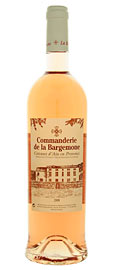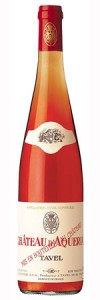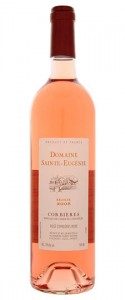Good God, is it that time of year again?
The other day while shopping I felt myself compulsively pulled toward an aisle stocked mainly of pink and rosé wines. It was unusually warm outside, mid Southern springtime in full force and things getting sticky, and the thought of a brisk, cold rosé had officially laid its hands on me.
For many wine drinkers, the impulse to turn to rosés in the late spring is biological, an annual marker of the onslaught of long days and hot, sweaty weather. With their bright acidity and slate-y, slaking vivacity, rosés are made for the heat and the outdoors, for impromptu afternoon cocktail gatherings on sun baked terraces and patios.
A problem, though, is that not all rosés are brisk, slate-y or slaking. Some are dense and punchy with ripe red fruit flavors. Some border on the sweet. Some are merely flaccid. Since rosés are made from red wine grapes they can easily tend toward richer red wine qualities. What we want this time of year, however, is something texturally closer to white wine, minerally but with light berry, earthy tones.
To make rosé, vintners leave the crushed juice in contact with the grape skins for a short amount of time, just long enough to impart the desirable color, tannin and other enriching elements into the wine (red wine macerates in the skins for much longer).
Naturally, how long that contact lasts, and what the character of the grapes are, will determine the color and intensity of the finished rosé. Almost always, the darker a rosé’s hue (some border on being fully red), the more rich and concentrated the wine will be.
There’s nothing wrong with this. Some wine drinkers prefer a more robust, juicy rosé. Red wine drinkers often begin with more concentrated rosés and move gradually toward lighter and more brisk styles.
To me, buying a rosé is relatively straight-forward. I look for wines that are salmon- or lightly rust-colored, and I don’t mind if they’re even paler than that. What this means is that the juice had fleeting contact with the skins and what I’m likely going to get will be lighter in body with an acidity unburdened by overly ripe fruit, tannin or oak.
Secondly, I look for where the wine comes from. I have more success getting rosés in the slaking style from regions in the south of France–Provence, Languedoc-Rousillon, certain villages in the Rhone region like Tavel, etc.–than anywhere else. This part of the world is famed for rosés, and the particular grapes that are used most–cinsault, carignan, syrah, among others–can produce focused, profound yet sleek wines.
In my experience it’s more common in other wine regions–perhaps those with less of a rosé tradition–to find examples of extracted, deeply red rosés. Especially if the red grapes employed tend more toward power and aging–cabernet sauvignon, merlot, tempranillo. Sometimes these wines are tantalizing, fresh and vivid. Sometimes the added weight and concentration is simply gilding the lily.
No matter where it comes from, it almost always comes down to color. The darker the pink (or red), the more fruity and powerful the wine will be. But if it’s hot and sticky outside, and you want that refreshing, slate-y blast, look for wines that are on the paler shade of pink. Your thirst will be slaked.



